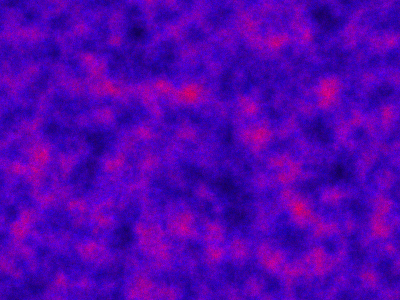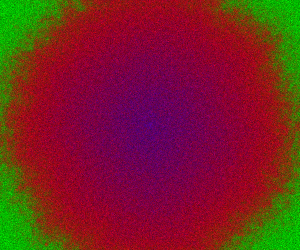Part 4: Gradients and the Langevin algorithm
Introduction
This is the fourth part in a series of posts on MCMC-based Bayesian inference for a logistic regression model. If you are new to this series, please go back to Part 1.
In the previous post we saw how the Metropolis algorithm could be used to generate a Markov chain targeting our posterior distribution. In high dimensions the diffusive nature of the Metropolis random walk proposal becomes increasingly inefficient. It is therefore natural to try and develop algorithms that use additional information about the target distribution. In the case of a differentiable log posterior target, a natural first step in this direction is to try and make use of gradient information.
Gradient of a logistic regression model
There are various ways to derive the gradient of our logistic regression model, but it might be simplest to start from the first form of the log likelihood that we deduced in Part 2:
We can write this out in component form as
Differentiating wrt gives
It’s then reasonably clear that stitching all of the partial derivatives together will give the gradient vector
This is the gradient of the log likelihood, but we also need the gradient of the log prior. Since we are assuming independent priors, it is easy to see that the gradient of the log prior is just
. It is the sum of these two terms that gives the gradient of the log posterior.
R
In R we can implement our gradient function as
glp = function(beta) {
glpr = -beta/(pscale*pscale)
gll = as.vector(t(X) %*% (y - 1/(1 + exp(-X %*% beta))))
glpr + gll
}
Python
In Python we could use
def glp(beta):
glpr = -beta/(pscale*pscale)
gll = (X.T).dot(y - 1/(1 + np.exp(-X.dot(beta))))
return (glpr + gll)
We don’t really need a JAX version, since JAX can auto-diff the log posterior for us.
Scala
def glp(beta: DVD): DVD =
val glpr = -beta /:/ pvar
val gll = (X.t)*(y - ones/:/(ones + exp(-X*beta)))
glpr + gll
Haskell
Using hmatrix we could use something like
glp :: Matrix Double -> Vector Double -> Vector Double -> Vector Double
glp x y b = let
glpr = -b / (fromList [100.0, 1, 1, 1, 1, 1, 1, 1])
gll = (tr x) #> (y - (scalar 1)/((scalar 1) + (cmap exp (-x #> b))))
in glpr + gll
There’s something interesting to say about Haskell and auto-diff, but getting into this now will be too much of a distraction. I may come back to it in some future post.
Dex
Dex is differentiable, so we don’t need a gradient function – we can just use grad lpost. However, for interest and comparison purposes we could nevertheless implement it directly with something like
prscale = map (\ x. 1.0/x) pscale
def glp (b: (Fin 8)=>Float) : (Fin 8)=>Float =
glpr = -b*prscale*prscale
gll = (transpose x) **. (y - (map (\eta. 1.0/(1.0 + eta)) (exp (-x **. b))))
glpr + gll
Langevin diffusions
Now that we have a way of computing the gradient of the log of our target density we need some MCMC algorithms that can make good use of it. In this post we will look at a simple approximate MCMC algorithm derived from an overdamped Langevin diffusion model. In subsequent posts we’ll look at more sophisticated, exact MCMC algorithms.
The multivariate stochastic differential equation (SDE)
has as its equilibrium distribution. Informally, an SDE of this form is a continuous time process with infinitesimal transition kernel
There are various more-or-less formal ways to see that is stationary. A good way is to check it satisfies the Fokker–Planck equation with zero LHS. A less formal approach would be to see that the infinitesimal transition kernel for the process satisfies detailed balance with
.
Similar arguments show that for any fixed positive definite matrix , the SDE
also has as a stationary distribution. It is quite common to choose a diagonal matrix
to put the components of
on a common scale.
The unadjusted Langevin algorithm
Simulating exact sample paths from SDEs such as the overdamped Langevin diffusion model is typically difficult (though not necessarily impossible), so we instead want something simple and tractable as the basis of our MCMC algorithms. Here we will just simulate from the Euler–Maruyama approximation of the process by choosing a small but finite time step and using the transition kernel
as the basis of our MCMC method. For sufficiently small this should accurately approximate the Langevin dynamics, leading to an equilibrium distribution very close to
. That said, we would like to choose
as large as we can get away with, since that will lead to a more rapidly mixing MCMC chain. Below are some implementations of this kernel for a diagonal pre-conditioning matrix.
Implementation
R
We can create a kernel for the unadjusted Langevin algorithm in R with the following function.
ulKernel = function(glpi, dt = 1e-4, pre = 1) {
sdt = sqrt(dt)
spre = sqrt(pre)
advance = function(x) x + 0.5*pre*glpi(x)*dt
function(x, ll) rnorm(p, advance(x), spre*sdt)
}
Here, we can pass in pre, which is expected to be a vector representing the diagonal of the pre-conditioning matrix, . We can then use this kernel to generate an MCMC chain as we have seen previously. See the full runnable script for further details.
Python
def ulKernel(glpi, dt = 1e-4, pre = 1):
p = len(init)
sdt = np.sqrt(dt)
spre = np.sqrt(pre)
advance = lambda x: x + 0.5*pre*glpi(x)*dt
def kernel(x):
return advance(x) + np.random.randn(p)*spre*sdt
return kernel
See the full runnable script for further details.
JAX
def ulKernel(lpi, dt = 1e-4, pre = 1):
p = len(init)
glpi = jit(grad(lpi))
sdt = jnp.sqrt(dt)
spre = jnp.sqrt(pre)
advance = jit(lambda x: x + 0.5*pre*glpi(x)*dt)
@jit
def kernel(key, x):
return advance(x) + jax.random.normal(key, [p])*spre*sdt
return kernel
Note how for JAX we can just pass in the log posterior, and the gradient function can be obtained by automatic differentiation. See the full runnable script for further details.
Scala
def ulKernel(glp: DVD => DVD, pre: DVD, dt: Double): DVD => DVD =
val sdt = math.sqrt(dt)
val spre = sqrt(pre)
def advance(beta: DVD): DVD =
beta + (0.5*dt)*(pre*:*glp(beta))
beta => advance(beta) + sdt*spre.map(Gaussian(0,_).sample())
See the full runnable script for further details.
Haskell
ulKernel :: (StatefulGen g m) =>
(Vector Double -> Vector Double) -> Vector Double -> Double -> g ->
Vector Double -> m (Vector Double)
ulKernel glpi pre dt g beta = do
let sdt = sqrt dt
let spre = cmap sqrt pre
let p = size pre
let advance beta = beta + (scalar (0.5*dt))*pre*(glpi beta)
zl <- (replicateM p . genContVar (normalDistr 0.0 1.0)) g
let z = fromList zl
return $latex advance(beta) + (scalar sdt)*spre*z
See the full runnable script for further details.
Dex
In Dex we can write a function that accepts a gradient function
def ulKernel {n} (glpi: (Fin n)=>Float -> (Fin n)=>Float)
(pre: (Fin n)=>Float) (dt: Float)
(b: (Fin n)=>Float) (k: Key) : (Fin n)=>Float =
sdt = sqrt dt
spre = sqrt pre
b + (((0.5)*dt) .* (pre*(glpi b))) +
(sdt .* (spre*(randn_vec k)))
or we can write a function that accepts a log posterior, and uses auto-diff to construct the gradient
def ulKernel {n} (lpi: (Fin n)=>Float -> Float)
(pre: (Fin n)=>Float) (dt: Float)
(b: (Fin n)=>Float) (k: Key) : (Fin n)=>Float =
glpi = grad lpi
sdt = sqrt dt
spre = sqrt pre
b + ((0.5)*dt) .* (pre*(glpi b)) +
sdt .* (spre*(randn_vec k))
and since Dex is statically typed, we can’t easily mix these functions up.
See the full runnable scripts, without and with auto-diff.
Next steps
In this post we have seen how to construct an MCMC algorithm that makes use of gradient information. But this algorithm is approximate. In the next post we’ll see how to correct for the approximation by using the Langevin updates as proposals within a Metropolis-Hastings algorithm.








